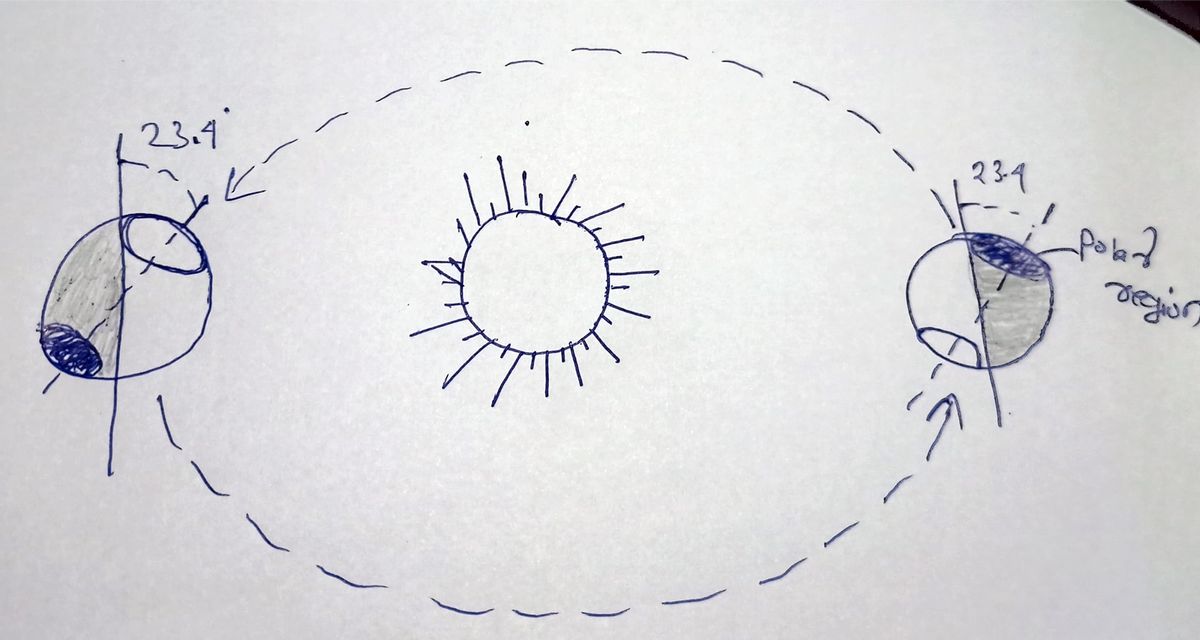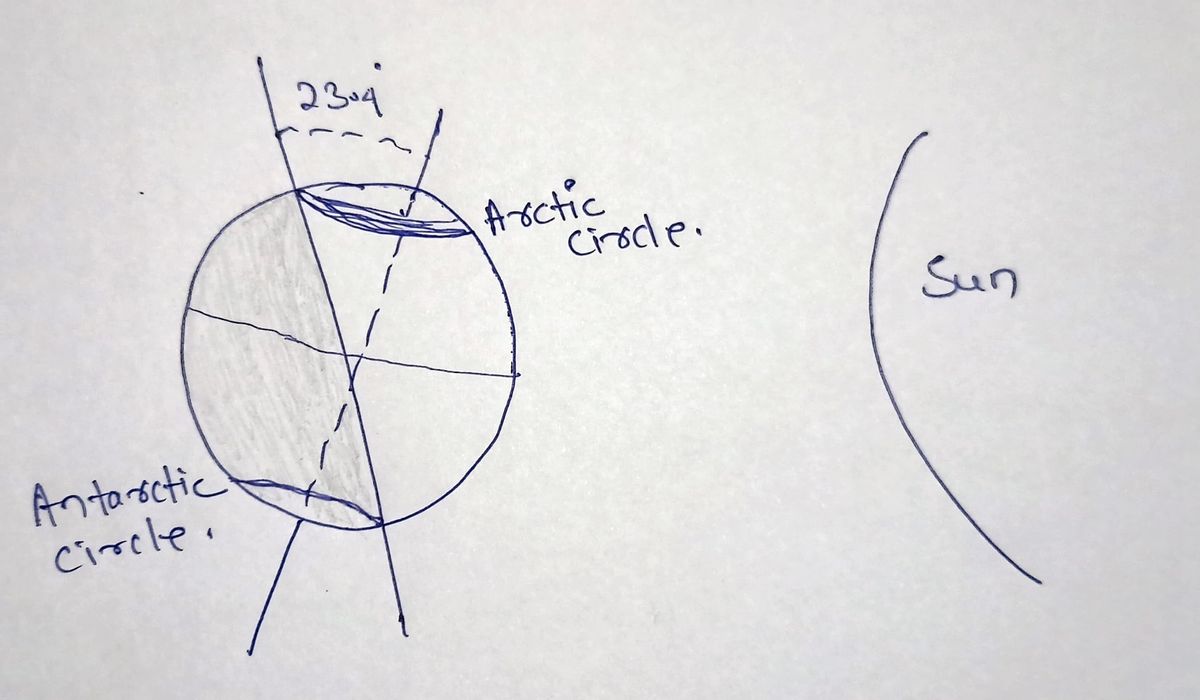Which regions on the Earth have the smallest annual change in daylight hours
Which regions on the Earth have the smallest annual change in daylight hours
The Equatorial region on the Earth have the smallest anual change in daylight hours. Any where in the line of equatorial line the there will be the smallest change of day light hours an It is because due the axial tilt of the Earth. The figure given below will give a better understanding for the concept.

In this figure the two such position have drawn in which one can see that the polar regions getting 24 hours of sun light in the right side position. In the left side position we can see it gets 24 hours night light because Earth's axial tilt. Due to this tilt when Earth revolves around its own axis the south pole remain dark for the total revolutionary period.

Such case happens on the right side.
So poles experience very most of sunlight 0-24 hours. But the equator have the equal time of day and night. So that have the smallest change in day light hours.
One can say from the above given figure the north pole getting 24 hours of sunlight that is the sun is always above the horizon, but in the south pole the area is not getting 24 hours. So the south pole in that stage of Earth is in night.
But if we look to the equator the area of sunlight is equally divided so only in that place so that the Equatorial line always gets equal time of sunlight and no sunlight. So we can say the Equatorial region is the one where the Earth have smallest anual change in day light hours and in the pole it is the maximum change in the daylight hours.
Step by step
Solved in 2 steps with 2 images









